A biweekly newsletter with public space news, resources, and opportunities.
A curated dispatch on all things public markets plus the latest announcements from the Market Cities Program.
In 2020, the COVID-19 pandemic led to widespread stay-at-home orders that disrupted people's daily routines, including how they shopped for food. During that time, Project for Public Spaces highlighted how open-air farmers markets were uniquely adaptable to meet social distancing requirements, allowing communities to continue accessing fresh, local food, while also providing an important sales outlet for vendors, including farmers and food producers. At a time when feelings of social isolation were heightened, these markets also created valuable opportunities for communities to gather and see neighbors, albeit at a distance and behind masks. The pandemic drove innovation among market vendors through services, such as delivery, curbside pickup, digital payment methods, product bundling, and prepared foods, which attracted new shoppers, and vendors reported higher sales.
However, with the benefit of five years of hindsight, the pandemic also marked a turning point in consumer behavior in public markets, much like in many other industries. Some trends that may seem old-fashioned have found new life, while other big shifts in city living present unprecedented challenges for market managers and policymakers.

Over the past two years, the Market Cities team at Project for Public Spaces has had the unique opportunity to delve deeper into these evolving trends by studying New York City’s Greenmarket system—the largest farmers market network in the U.S. The team worked with GrowNYC, the organization that operates these markets, throughout 2024 to assess how their 50+ farmers markets are doing following the height of the COVID-19 pandemic and how they have changed and responded to new conditions over the last five years, all with the goal of developing a strategy for the organization’s future as they enter their 50th anniversary year in 2026. The results of this work and our analysis formed the basis for our recommendations.
GrowNYC’s Greenmarkets may be unique in their scale and location, but many of our findings and recommendations below have relevance to markets in other urban and rural contexts across the U.S. and beyond.
Our work with Greenmarket provided an opportunity to study a market system and gain insights into questions such as: How many of these COVID-era changes have continued? Have the core customer bases of markets changed? Are vendors doing well, or are they facing new struggles? Given the complexity of these questions, we recognized that we would need to employ various research methods to get a complete picture. Our team conducted on-site analysis, surveys, focus groups, and market system mapping. We surveyed over 1,500 customers, half of whom have been shopping at Greenmarkets for over a decade, about how their shopping habits have changed since the pandemic, and why they choose to shop at farmers markets.
The primary reason survey respondents shop at Greenmarket is to support local producers and buy locally produced goods. In other words, the motivation to support their local economy and regional agriculture remains a top priority, more so even than product quality. For many customers, shopping at a farmers market is a way to act on their values—values that defined the resurgence of the farmers market movement in the 1970s and 1980s and still seem to resonate today.

Greenmarket continues to retain and even attract a loyal customer base; however, the markets still face some challenges with shoppers. In today’s economy, it should come as no surprise that for survey respondents who report shopping less since the pandemic, price is a persistent factor. Despite the success of Greenmarket’s robust SNAP redemption and other incentive programs, the misconception that market products cost more, combined with the reality of increased prices due to higher on-farm and labor costs, may deter some shoppers. Many respondents shared that the discontinuation of compost drop-off and textile recycling, mainstay offerings at many New York City farmers markets for years, due to municipal budget cuts, has resulted in their decision to shop less frequently at Greenmarket. Other top desired changes to Greenmarket among customers include later hours, more events, and educational opportunities.
These takeaways led us to several recommendations that are relevant not only to Greenmarket but to many farmers markets operating in this ever-changing consumer landscape. Farmers markets remain an important place to exercise values. Therefore, we recommend creating a targeted campaign strategy that emphasizes market producers, the proximity of farms to the market, and the economic impact shopping locally has on regional producer businesses. To combat concerns about higher prices, conduct local price comparisons and promote products that are comparable or less expensive at the farmers markets than at the grocery store. Farmers markets must combat these misconceptions, especially now as the U.S. faces economic uncertainty due to tariffs and a weakening job market.
With climate anxiety running high, especially among younger people, hosting sustainability programming at markets and providing education about the environmental benefits of shopping locally are crucial strategies to establish the next generation of loyal customers.
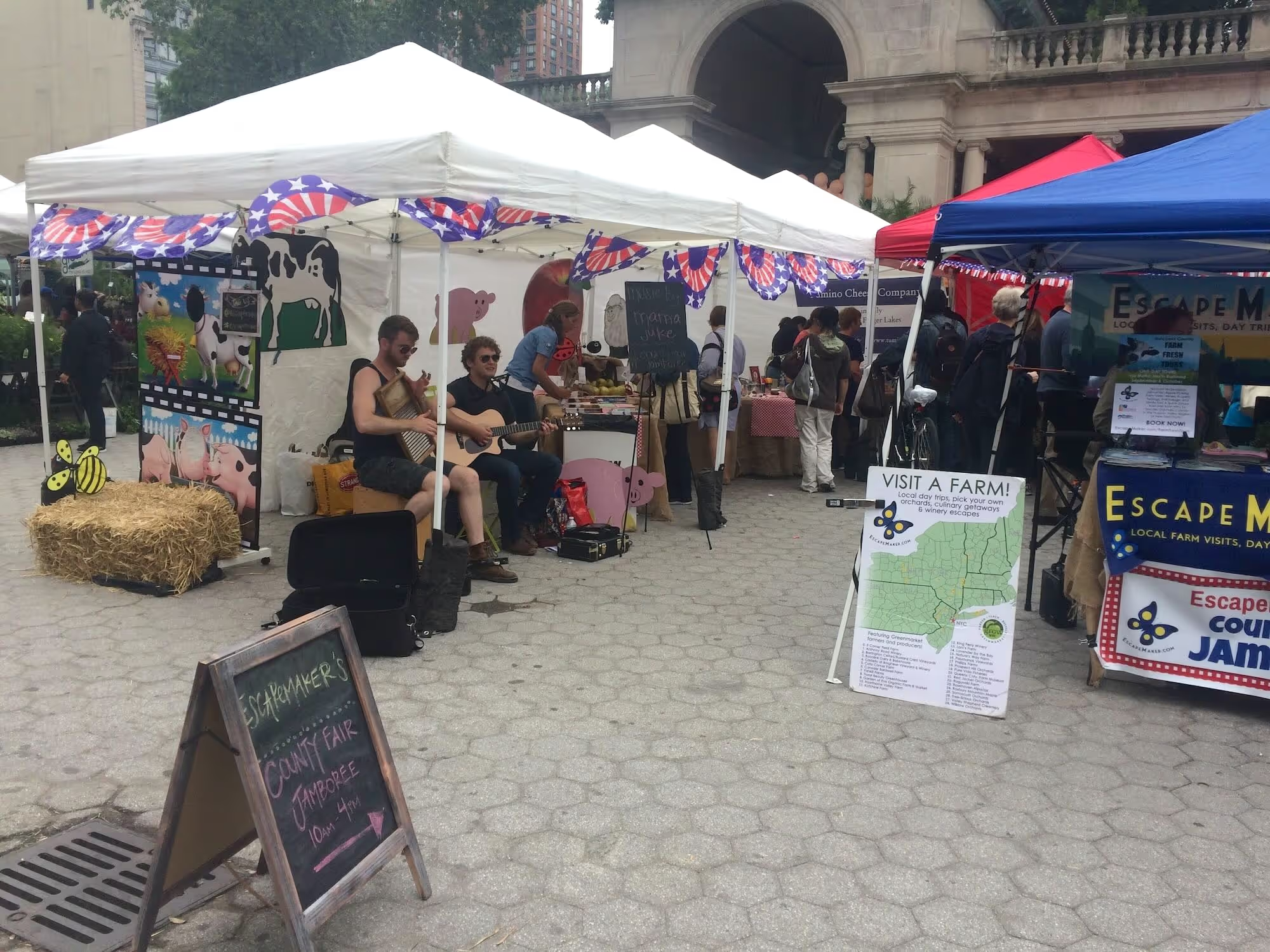
Another way to turn the younger generation of shoppers into long-time customers is to focus on how fun a visit to a farmers market can be. Shopping at a farmers market should be an enjoyable experience, complemented by activities and entertainment. Recent research shows shoppers across the U.S., and younger shoppers in particular, visit markets because they’re seeking something “fun” to do. The market can become a destination by getting creative with programming, building partnerships to support this programming, and promoting these experiences.
Whether a market is operated by an umbrella organization or individually managed, it's helpful to understand how that market fits within the larger local market ecosystem. This can help the market identify the unique niche it's best positioned to fill in the community. A market manager who understands these details can make more strategic decisions about operating hours, product variety, and leveraging the market’s location to cater to its core audience.
Given the number of markets within the Greenmarket system, the organization has developed a series of typologies to facilitate resource allocation and inform operational decisions. “Flagship markets” are the largest and some of the oldest markets in the network, featuring the most producers, the widest product variety, and the largest customer base. Meanwhile, “neighborhood markets” are primarily located in residential areas, “commuter markets” are intended for office grab-and-go shoppers, and “food access markets” aim to increase access to fresh food in specific areas of the city.
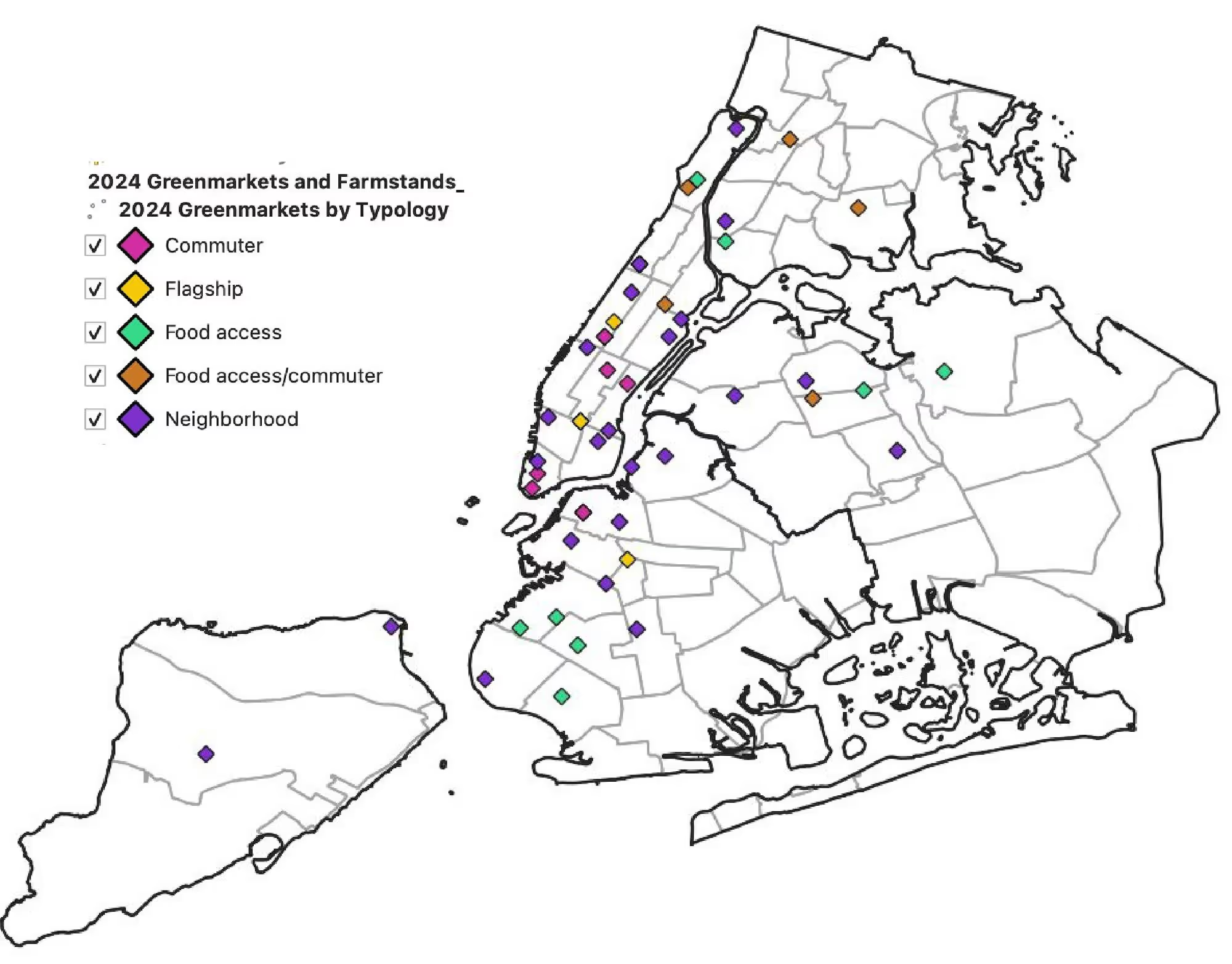
We found these categories helpful in sussing out trends at markets across the city. While most producers' sales have been steady, the survey results showed that producers at certain market types within the system have fared better than others. Flagship market producers were the only ones to experience a “significant increase” in sales over the last few years, suggesting that there’s something about these markets that creates a major draw for customers, old and new. While our analysis found that most customers walk to their local market, people are more willing to take public transit to the flagship markets specifically. Combined with focus group feedback, this indicates that centrally located flagship markets with numerous vendors, diverse products, and high activity can attract customers from greater distances.
Survey results indicate that customers primarily choose markets based on proximity to their homes, followed by ease of transit access. This was true even for customers who most frequently shop at "commuter markets"—markets located to serve people traveling to and from work in busy business districts. Since 2020, commuter patterns have undergone significant changes. Markets intended to serve busy workers now seem actually to serve residents who live in these business districts. Another possible indication that these markets may need a retool is that our research found producers at “commuter markets” to be less satisfied with their locations, citing issues with visibility and ambiance. To adapt to our new reality, market operators should consider adjusting the hours, vendor mix, and locations of these markets to better serve the customers they actually have, rather than the commuters they were initially designed for.
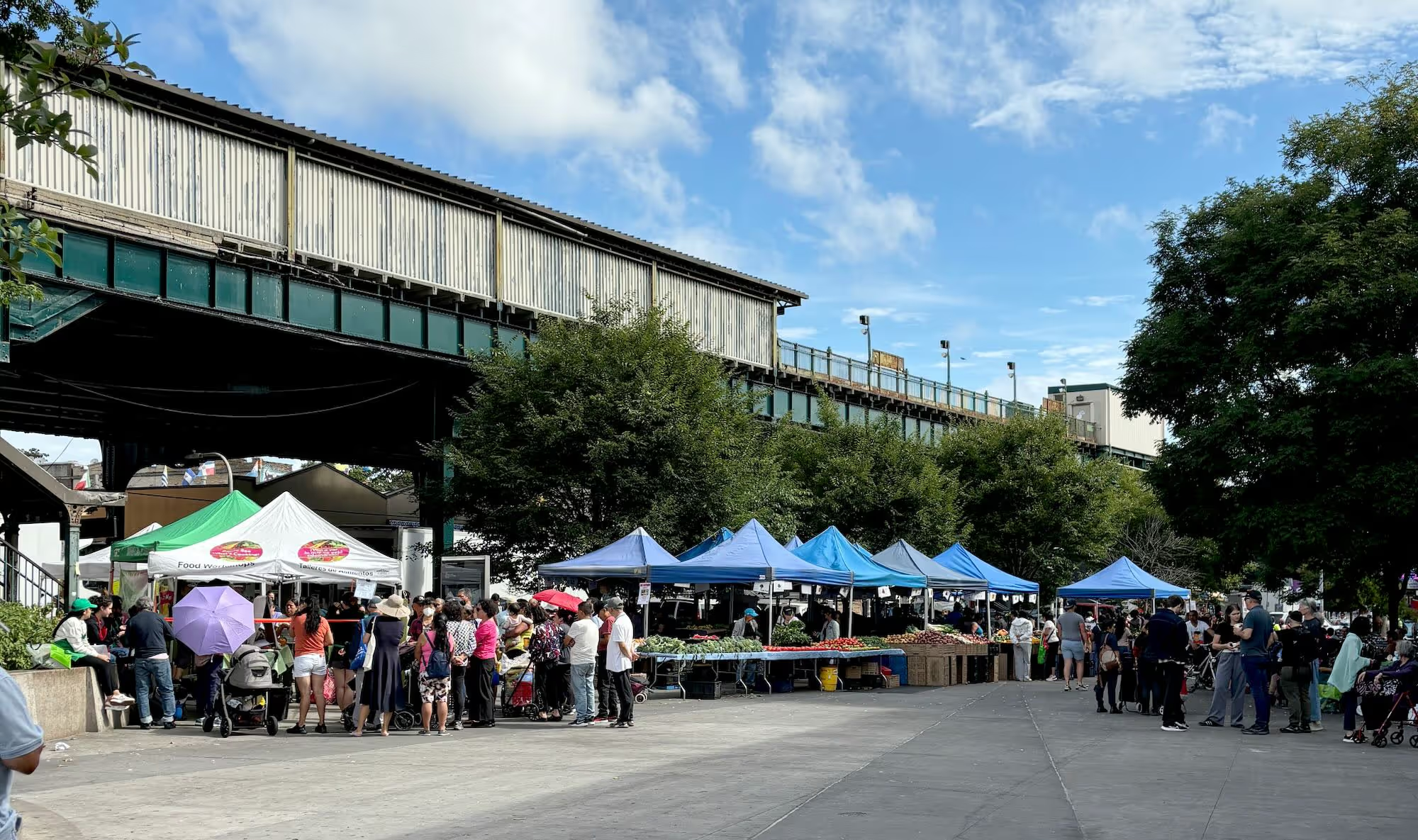
Throughout our research, we found that most Greenmarket producers are experiencing fairly strong sales, but that doesn’t necessarily mean their businesses are financially flourishing. Input costs for production materials, gasoline, road tolls, and other expenses have increased, resulting in slim profit margins for these small businesses. Farmers and producers have limited time and resources, making it difficult for them to participate in multiple markets each week.
When funders and policymakers aim to improve food access, they often conclude that every neighborhood needs its own farmers market. However, our findings suggest a different approach. To maximize producer sales and reach a wider audience, the market system may be better off adopting a strategy of adapting, growing, or consolidating existing markets, rather than creating entirely new ones.
While our research uncovered that Greenmarket customers want their local markets to be open more days of the week, it may not be realistic for producers to attend additional markets per week. Instead, we recommended that Greenmarket consider creating "market zones"—geographic areas where several markets operate in proximity to each other, either by walking or transit. Within a given zone, one market could be expanded into a “flagship market,” and the operating schedules of the other markets in the zone could be staggered on different days. Since people will travel a bit farther for a large market with lots of offerings, this approach could give customers the sense that they have more convenient market shopping options nearby throughout the week, even if they’re not always visiting the same market. The result is that more customers would be served, and producers’ time, resources, and capacity wouldn’t be stretched too thin.
Even if your market doesn’t operate within a formal network, such as Greenmarket, it still makes sense to connect with other market operators in your area to coordinate schedules and locations. It's a simple way to better serve customers while creating more opportunities for producers and vendors alike. With limited resources, it’s important to find new ways to share the load.
For better or worse, market managers wear a lot of hats. Market managers not only manage markets and the vendors who participate in them, but they also manage a community gathering place. As a result of this reality, markets are stronger when they are thoughtfully integrated with their surroundings, both physically and programmatically.
The Greenmarket study showed us that how well the market functions as a public space is important to customers, and thus important to vendor sales and the overall success of the market. Placemaking that improves a market’s ambiance requires thoughtful attention and should be viewed as a requirement. Market managers should take the opportunity to observe the market through the eyes of the customer on a regular basis, considering elements such as entrances, sightlines, and visibility from afar, the availability of public seating and shade, the safety and convenience of traveling to and from the market, and whether the market layout is easily navigable.
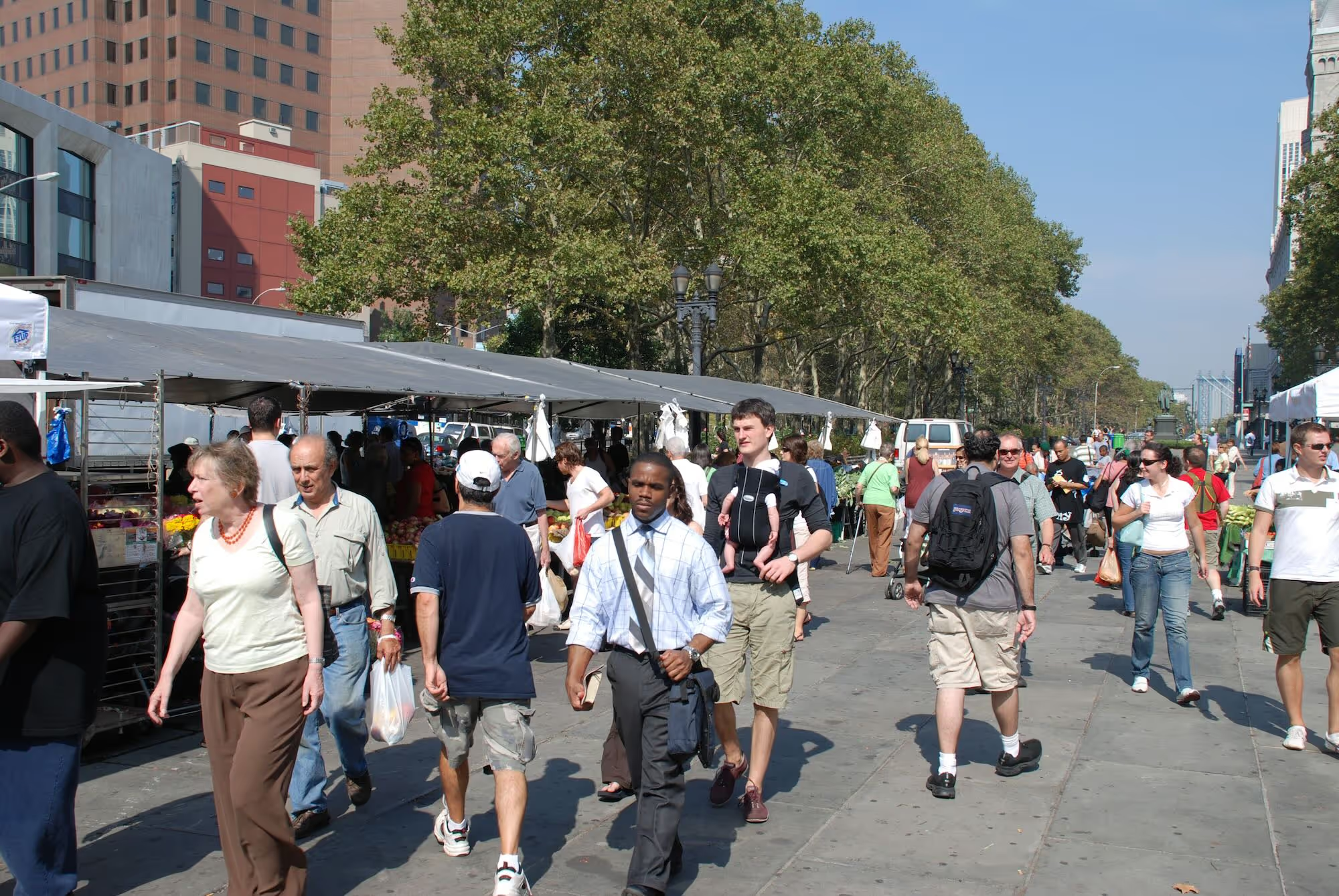
Temporary markets often face limited site options due to two key challenges: finding spaces of the right size to accommodate the market and partnering with property owners who are willing to lease to them on favorable terms. And, Greenmarket is no different, often operating in locations that make ideal market layout or other public space improvements difficult to execute. Our site analysis of 11 Greenmarkets across four out of the five boroughs of New York City revealed that some markets were not fully leveraging the potential connectivity between the market and its surrounding areas. In one case, a market could better align its layout with surrounding foot traffic patterns to draw potential customers in. In another case, a relatively large market operating on a wide-open plaza affords vendors ample space for displays and easy customer flow. But it lacks natural shade cover, making it an uncomfortable place to spend significant time on warm, sunny days.
When siting a new market location or optimizing the use of an existing site, market managers should take the time to evaluate the space not only as a market but also as a public gathering space, and attempt to counter any site characteristics that are less than ideal. Addressing these details will enhance a customer's experience at the market, increasing spending by extending their dwell time, and ultimately turning them into regular shoppers.
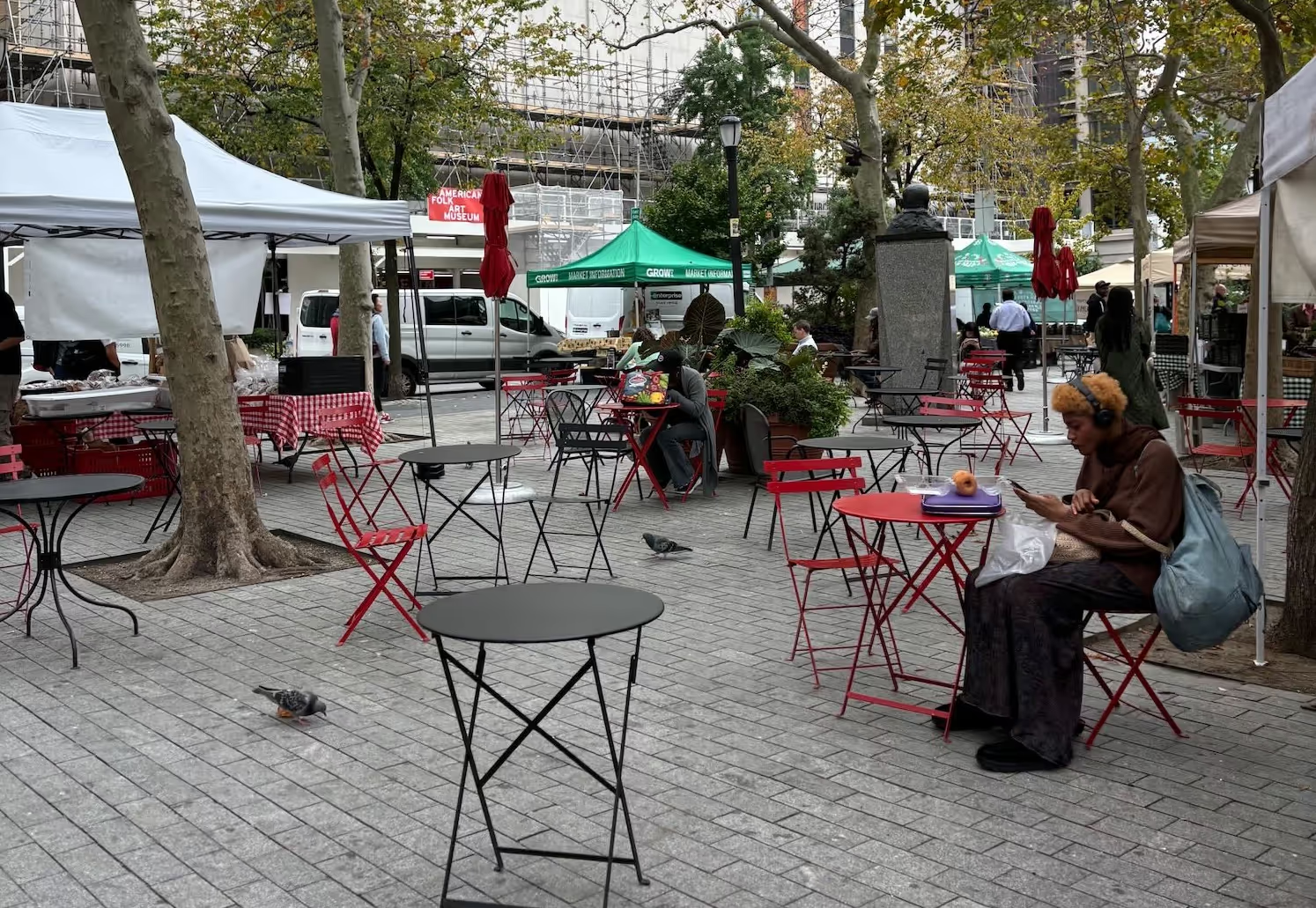
In addition to focusing on the market space itself, market managers can work to enhance their market’s “place factor” by connecting with existing organizations and activities in their neighborhoods. Farmers markets should join forces, as NYC’s Greenmarket often does, with nearby business improvement districts, merchants' associations, or other hyperlocal organizations focused on enhancing the public realm. These relationships could benefit the market by leading to strategically placed public seating, shade structures, signage, coordinated public events and promotions, and more. Such placemaking partnerships could ultimately benefit the entire area, not just the market.
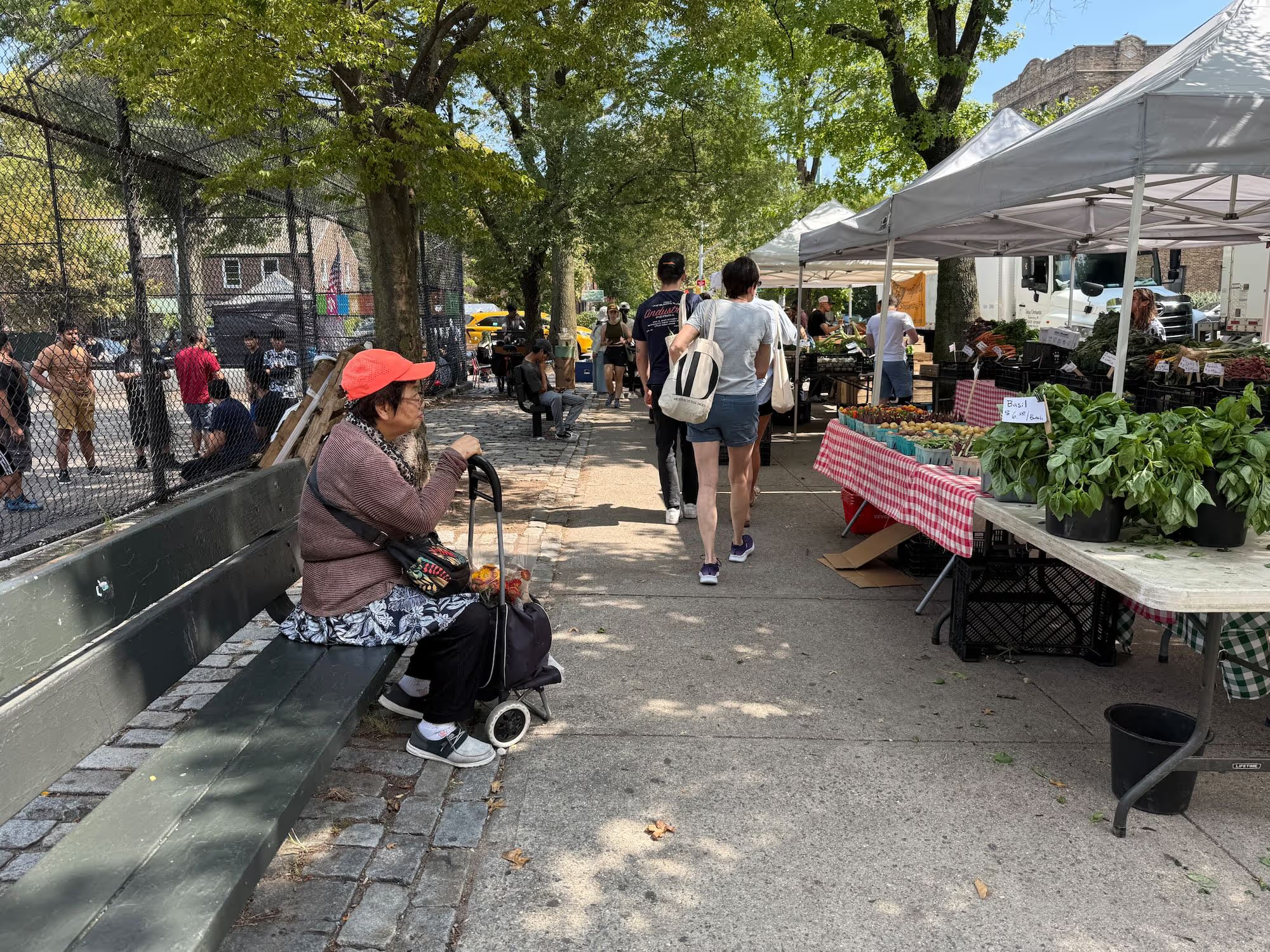
When looking at the state of farmers markets through the lens of New York City’s Greenmarket system, it’s clear these markets are as important as ever to their communities. The value and resilience of markets, highlighted during the COVID-19 pandemic worldwide, underscore why these public spaces are crucial community anchors that deliver essential services in the face of future emergencies. However, they can only deliver on this promise if they remain nimble and responsive to the evolving needs of vendors and customers. This adaptability—the capacity to pivot operations in response to changing customer and producer needs—will be the defining characteristic of successful markets in the decades ahead.
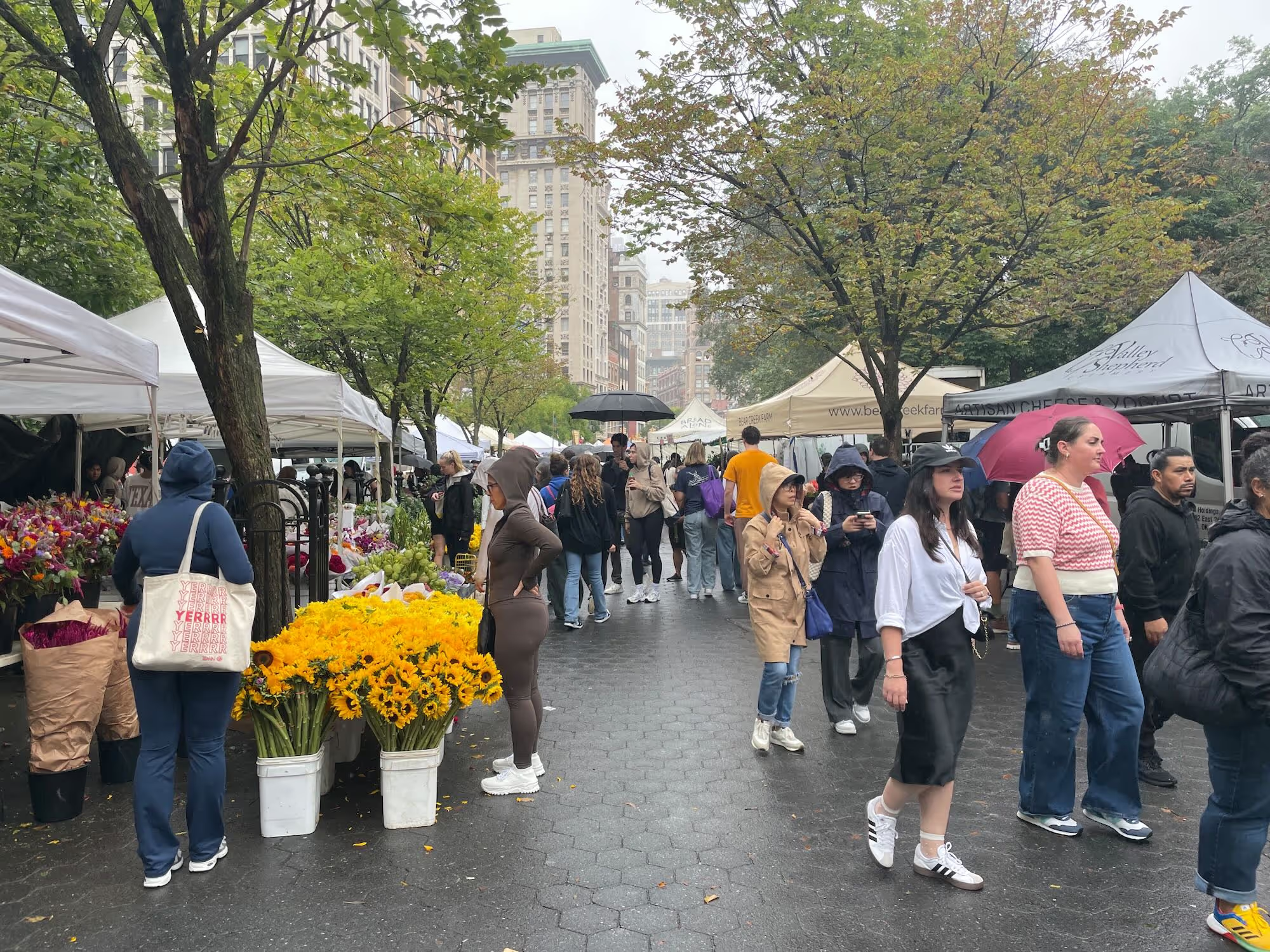
Now and in the future, market operators must continue to stay true to their mission and regularly find ways to celebrate and emphasize their benefits to the public. They need to find innovative ways to utilize limited resources for maximum impact. And, managers should focus on creating a comfortable and lively market space, with amenities, programs, and events that provide the community with ample reasons to return week after week.
Of course, the future of farmers markets is not entirely dependent on the talent and commitment of their operators and vendors; it will also require policymakers and officials to support markets through policy and investment. If all done together, markets can fulfill their highest purpose: supporting regional agriculture while connecting people to fresh, local food, and to their neighbors and communities.
Project for Public Spaces offers technical assistance to clients in the public, civic, and private sectors that seek to support the wellbeing of communities through public spaces like park & plazas, districts, and public markets. Through our placemaking approach, we help you through every step of the process, from developing a community-driven vision to opening day and beyond. Learn more about our services.
The rich text element allows you to create and format headings, paragraphs, blockquotes, images, and video all in one place instead of having to add and format them individually. Just double-click and easily create content.
The rich text element allows you to create and format headings, paragraphs, blockquotes, images, and video all in one place instead of having to add and format them individually. Just double-click and easily create content.
Body Text Body Link
The rich text element allows you to create and format headings, paragraphs, blockquotes, images, and video all in one place instead of having to add and format them individually. Just double-click and easily create content.
Here is some highlighted text from the article.




Headings, paragraphs, blockquotes, figures, images, and figure captions can all be styled after a class is added to the rich text element using the "When inside of" nested selector system.
Headings, paragraphs, blockquotes, figures, images, and figure captions can all be styled after a class is added to the rich text element using the "When inside of" nested selector system.
Headings, paragraphs, blockquotes, figures, images, and figure captions can all be styled after a class is added to the rich text element using the "When inside of" nested selector system.

We are committed to access to quality content that advances the placemaking cause—and your support makes that possible. If this article informed, inspired, or helped you, please consider making a quick donation. Every contribution helps!
Project for Public Spaces is a 501(c)(3) tax-exempt organization and your donation is tax-deductible within the guidelines of U.S. law.